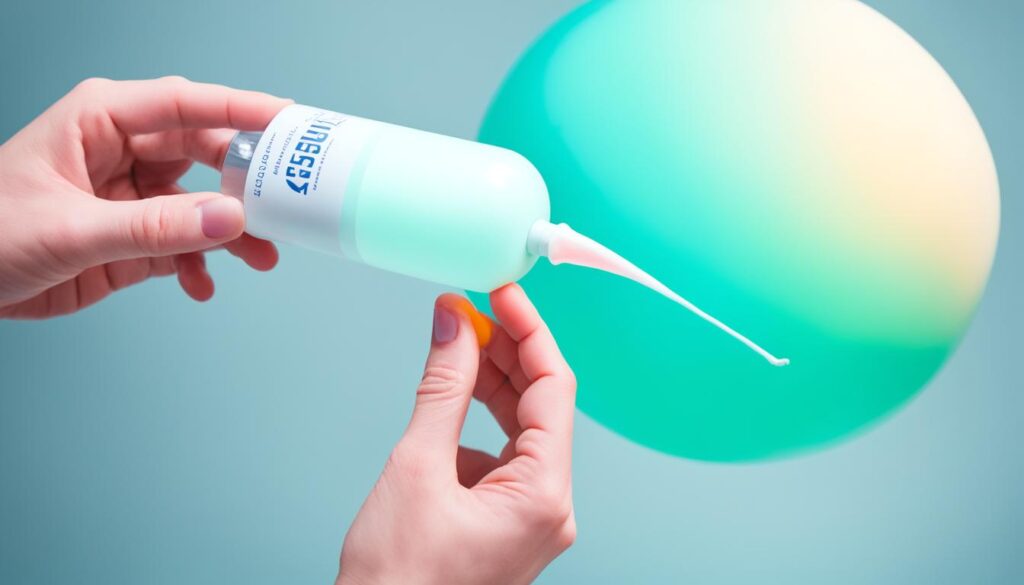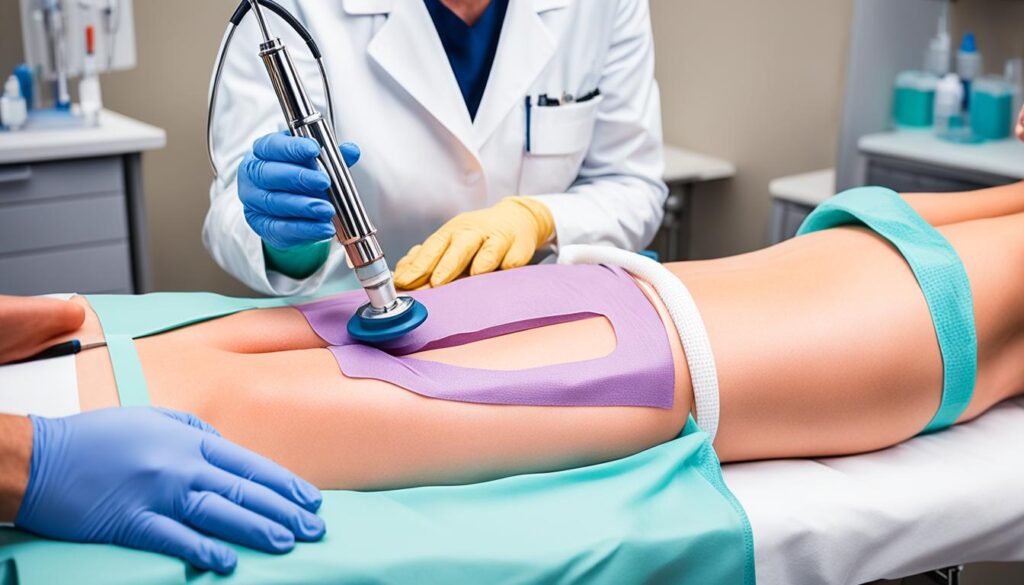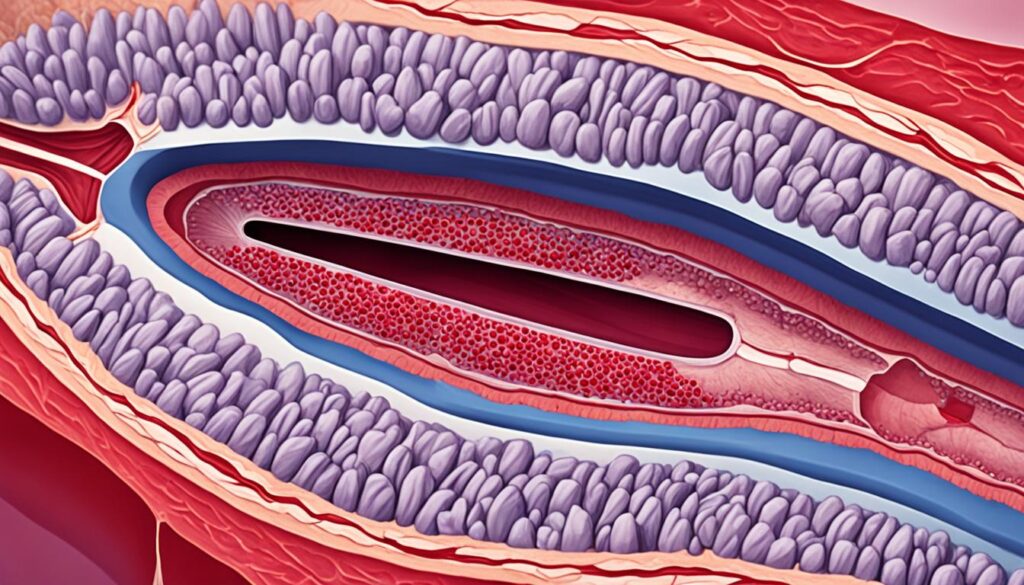Are you looking for gentle and effective ways to treat anal fissures without surgery? Look no further! There are various non-surgical treatment options available that can promote healing with minimal downtime. Whether you’re seeking relief from the discomfort of chronic anal fissures or looking for solutions to prevent the recurrence of acute fissures, non-surgical treatments can provide the solution you need.
Table of Contents
ToggleBefore we dive into the details of these non-surgical options, let’s take a quick look at why surgical intervention may not always be necessary. While anal fissures can cause significant pain and discomfort, they can often be healed effectively without the need for invasive procedures. Non-surgical treatments have shown high success rates in healing the fissure and low recurrence rates, making them a favorable choice for many individuals.
Topical Nitroglycerin and Pneumatic Dilatation
When it comes to non-surgical treatment options for chronic anal fissure, topical nitroglycerin and pneumatic dilatation have shown promising results. These treatments offer a conservative approach to healing fissures without the need for invasive procedures like surgical sphincterotomy.
Topical nitroglycerin is a medication that is applied directly to the affected area. It helps to relax the sphincter muscles, increase blood flow to the fissure, and promote healing. Studies have shown that this treatment option has a healing rate of up to 94% with a recurrence rate of only 2%. You simply need to apply the medication topically three times a day to reap its benefits.
Pneumatic dilatation is another non-surgical option that involves using controlled balloon pressures to reduce resting sphincter pressures. This procedure helps to stretch the anal sphincter muscles, allowing for better blood flow and healing of the fissure. Like topical nitroglycerin, pneumatic dilatation has been found to have high success rates in healing anal fissures and low recurrence rates.
Both topical nitroglycerin and pneumatic dilatation provide effective alternatives to surgery for the treatment of chronic anal fissure. These non-invasive treatments promote healing and offer minimal downtime, allowing you to resume your daily activities without significant interruption.
| Treatment | Healing Rate | Recurrence Rate |
|---|---|---|
| Topical Nitroglycerin | Up to 94% | 2% |
| Pneumatic Dilatation | Up to 94% | 2% |
By choosing these non-surgical treatments, you can experience effective healing of your anal fissure while minimizing the risk of complications associated with surgical interventions. However, it is important to consult with a healthcare professional to determine the most suitable treatment option for your specific condition.

Topical Nifedipine and Botulinum Toxin Injections
When it comes to the treatment of chronic anal fissures, the combination of topical nifedipine and botulinum toxin injections has shown remarkable effectiveness. This treatment option offers a non-surgical approach for healing anal fissures with a low recurrence rate and minimal side effects.
The application of topical nifedipine three times a day helps to promote healing and reduce pain. Nifedipine works by relaxing the smooth muscles in the anal area, improving blood flow and facilitating the healing process. Clinical studies have demonstrated that topical nifedipine has superior healing rates compared to other non-surgical treatments, such as nitroglycerin and pneumatic dilatation.
In combination with topical nifedipine, botulinum toxin injections offer an additional level of therapeutic support. These injections effectively paralyze the anal sphincter muscle temporarily, reducing spasms and promoting healing. The use of botulinum toxin injections has been shown to have a significant impact on pain reduction and overall healing outcomes.
One of the key advantages of this combination treatment is its low recurrence rate. Studies have reported a recurrence rate of only 2% among patients who received topical nifedipine and botulinum toxin injections. This makes it an appealing option for those seeking long-term relief from anal fissures without the need for surgery.
Furthermore, minimal side effects have been associated with topical nifedipine and botulinum toxin injections, making them a safe choice for fissure treatment. Patients undergoing this combination treatment have reported minimal discomfort and have not experienced any major complications.
By leveraging the benefits of both topical nifedipine and botulinum toxin injections, this combination treatment provides a comprehensive approach to healing chronic anal fissures. It addresses the underlying cause of the fissure while offering effective symptom relief and a high success rate in promoting healing.
Comparison of Treatment Options for Chronic Anal Fissures
| Treatment Option | Healing Rate | Recurrence Rate | Side Effects |
|---|---|---|---|
| Topical Nitroglycerin | 71% | 6% | Mild headache, flushing |
| Pneumatic Dilatation | 71% | 9% | Discomfort during the procedure |
| Topical Nifedipine and Botulinum Toxin Injections | 94% | 2% | Minimal |
Lateral Anal Sphincterotomy as a Last Resort
Lateral anal sphincterotomy is a surgical treatment option that is considered as a last resort for patients who have not responded to non-surgical treatments for chronic anal fissure. This procedure involves the cutting of a small portion of the anal sphincter muscle to promote healing, reduce spasm, and alleviate pain. However, it is important to carefully consider the potential risks before opting for surgical intervention, as there is a risk of incontinence associated with this procedure.
To illustrate the risks and benefits of lateral anal sphincterotomy, we have provided a detailed table below:
| Pros | Cons |
|---|---|
| Promotes healing of chronic anal fissure | Risk of incontinence |
| Reduces spasm and pain | Potential complications |
| Last resort option | Requires surgical intervention |

Nonsurgical Options for Acute Anal Fissures
If you’re experiencing acute anal fissures, there are several nonsurgical treatment options available to provide relief and promote healing. These options include:
- Dietary changes: Ensuring an adequate intake of fiber and fluids in your diet can help soften the stool and reduce strain during bowel movements, allowing the fissure to heal faster. Include high-fiber foods such as fruits, vegetables, and whole grains in your meals, and drink plenty of water throughout the day.
- Stool softeners: Over-the-counter stool softeners can help prevent constipation and make bowel movements more comfortable. These medications work by adding moisture to the stool, making it easier to pass without causing further irritation to the anal fissure.
- Topical creams: Applying topical creams or ointments to the affected area can provide temporary relief from pain and itching. Look for creams that contain ingredients like hydrocortisone or numbing agents to soothe the area and promote healing.
It’s important to address the underlying cause of the acute anal fissure to prevent recurrence. In some cases, the fissure may be related to an underlying medical condition, such as inflammatory bowel disease or chronic constipation. Consulting with a healthcare professional can help determine the appropriate treatment plan and identify any underlying issues that need to be addressed.
Acute anal fissures typically respond well to conservative treatments and have a high healing rate. By making these nonsurgical options a part of your anal fissure management plan, you can find relief from symptoms and support the healing process.

| Treatment Option | Benefits | Considerations |
|---|---|---|
| Dietary Changes | – Soften stool and reduce strain – Promote healing through adequate fiber and fluid intake | – Requires commitment to dietary adjustments – May take time to see results |
| Stool Softeners | – Prevent constipation – Ease bowel movements and minimize irritation | – May cause temporary diarrhea or bloating – Long-term use should be discussed with a healthcare professional |
| Topical Creams | – Provide temporary relief from pain and itching – Soothe the affected area | – Results may vary for different individuals – Use as directed and consult a healthcare professional if symptoms persist |
Lifestyle Changes to Prevent Fissures
Certain lifestyle changes can help prevent the occurrence of anal fissures. By incorporating these changes into your daily routine, you can maintain optimal anal health and reduce the risk of developing painful fissures.
Proper Fluid Intake and Hydration
Maintaining proper fluid intake is essential in preventing anal fissures. It helps prevent dehydration and ensures that your stools remain soft and easy to pass. Aim to drink at least 8-10 glasses of water or other non-caffeinated beverages every day.
A High-Fiber Diet for Regular Bowel Movements
Incorporating a high-fiber diet into your lifestyle can promote regular bowel movements and prevent constipation, which can contribute to anal fissures. Include whole grains, fruits, vegetables, and legumes in your daily meals to increase your fiber intake. This will help keep your stool soft and reduce the strain during bowel movements.
Managing Caffeine Consumption
Excessive consumption of caffeine can lead to dehydration, which can make your stools harder and more difficult to pass. Limit your intake of caffeinated beverages such as coffee, tea, and energy drinks. Instead, opt for water or herbal teas to stay hydrated and maintain proper bowel function.
Maintaining Proper Sitting Posture
Your sitting posture during bowel movements can have an impact on the health of your anal area. To prevent unnecessary strain and pressure, make sure to sit in a relaxed position with your feet flat on the floor. Avoid prolonged sitting on the toilet, as this can lead to increased pressure on the anal area.
Using Laxatives if Needed
If you frequently experience constipation or have difficulty passing stools, using laxatives temporarily may be beneficial. However, it is important to consult with your healthcare provider before using any laxatives to ensure they are suitable for your specific condition.
By making these lifestyle changes, you can take proactive steps to prevent anal fissures and maintain optimal anal health. Remember to consult with a healthcare professional for personalized advice based on your individual circumstances.

Sitz Baths for Pain Relief and Healing
Sitz baths are a highly effective form of therapy for relieving pain and promoting healing in anal fissures. This simple and non-invasive treatment involves soaking the anal area in warm water, providing soothing relief and facilitating the relaxation of the sphincter muscles. The warm water increases blood flow to the fissure and helps to alleviate discomfort.
To perform a sitz bath, fill a small basin or bathtub with enough warm water to cover the hips and buttocks when seated. You can add Epsom salts or herbal infusions for additional therapeutic benefits. Sit in the warm water for 10 to 15 minutes, ensuring that the affected area is completely submerged. Repeat this process several times a day, especially after bowel movements, to maximize the healing benefits.

- Pain relief: The warm water soothes the area, reducing pain and discomfort.
- Promoting healing: By increasing blood flow to the fissure, sitz baths help to accelerate the healing process.
- Relaxation of sphincter muscles: The warmth of the water helps to relax the sphincter muscles, reducing spasms and aiding in the healing process.
By incorporating sitz baths into your daily routine, you can experience significant pain relief and promote faster healing of anal fissures. However, it’s important to consult with a healthcare professional to ensure appropriate usage and to determine the optimal frequency and duration for your specific condition.
Topical Anesthetics and Medications
For immediate pain relief from anal fissures, topical anesthetics can provide temporary relief by numbing the area around the anus. One commonly used topical anesthetic is lidocaine, which works by blocking nerve signals to alleviate pain and discomfort. Applying lidocaine cream or ointment directly to the affected area can help soothe the pain and provide much-needed relief during bowel movements.
In addition to topical anesthetics, another medication that can be beneficial in the treatment of anal fissures is hydrocortisone. Hydrocortisone is a corticosteroid that helps reduce inflammation, relieve itching, pain, and swelling. Applying hydrocortisone cream or ointment to the affected area can provide relief and aid in the healing process.
Furthermore, topical nitrates are another type of medication that can be used for the treatment of anal fissures. Nitrates, such as nitroglycerin, work by relaxing the muscles around the anus and increasing blood flow to the fissure. This relaxation of muscles promotes healing and reduces the pain associated with anal fissures. Applying topical nitroglycerin ointment can be effective in providing pain relief and accelerating the healing process.
Conclusion
Non-surgical treatment options for anal fissures offer effective and safe alternatives to surgical intervention. These options, including topical medications, sitz baths, and lifestyle modifications, can promote healing while minimizing downtime and the risk of incontinence associated with surgical sphincterotomy. The combination of topical nifedipine and botulinum toxin injections has demonstrated excellent results, with low recurrence rates and minimal side effects. It is crucial to consult with a healthcare professional to determine the most suitable treatment option based on individual circumstances.
With the right non-surgical approach, anal fissures can heal effectively, providing relief from symptoms and improving overall anal health. These treatment options have shown high success rates in healing the fissure and low recurrence rates, offering patients a viable alternative to surgery. Emphasizing the importance of individualized care, healthcare professionals will guide patients in selecting the most appropriate treatment plan for optimal outcomes.
By exploring non-surgical interventions, individuals with anal fissures can benefit from effective treatment options without the need for surgery. These treatments prioritize patient comfort, minimize downtime, and aim to promote healing while addressing the underlying causes of the condition. When it comes to anal fissures, non-surgical methods prove to be a valuable and accessible approach for patients seeking relief and improved quality of life.
FAQ
Are there non-surgical treatment options for chronic anal fissures?
Yes, there are various non-surgical treatment options available that can provide gentle and effective relief from symptoms and promote healing. These options include topical nitroglycerin, pneumatic dilatation, topical nifedipine, botulinum toxin injections, and lateral anal sphincterotomy as a last resort. It is important to consult with a healthcare professional to determine the most suitable treatment option for individual cases.
What are topical nitroglycerin and pneumatic dilatation?
Topical nitroglycerin and pneumatic dilatation are non-surgical treatment options for chronic anal fissure. Topical nitroglycerin is applied topically three times a day and has been found to promote healing in 94% of patients with a low recurrence rate of 2%. Pneumatic dilatation involves the use of controlled balloon pressures to lower resting sphincter pressures. These treatments offer a conservative approach to fissure treatment without the risk of incontinence associated with surgical sphincterotomy.
What is the combination treatment of topical nifedipine and botulinum toxin injections?
Topical nifedipine and botulinum toxin injections have been found to be a highly effective combination treatment for chronic anal fissure. This treatment option has shown superior healing rates (94%) compared to other non-surgical options and a low recurrence rate of 2%. Nifedipine is applied topically three times a day, while botulinum toxin injections temporarily paralyze the anal sphincter and promote healing. This combination treatment provides an excellent non-surgical option for fissure treatment with favorable outcomes.
When is lateral anal sphincterotomy recommended?
Lateral anal sphincterotomy is a surgical treatment option that is reserved for patients who have not responded to non-surgical treatments for chronic anal fissure. This procedure involves cutting a small portion of the anal sphincter muscle to promote healing and reduce spasm and pain. However, it carries a risk of incontinence, which is why it is considered a last resort treatment option. It is important to carefully weigh the potential benefits and risks before opting for surgical intervention.
Are there non-surgical options for acute anal fissures?
Yes, there are non-surgical treatment options available for acute anal fissures. These options include dietary changes to ensure an adequate intake of fiber and fluids, the use of over-the-counter stool softeners, and the application of topical creams. These treatments can promote healing and provide relief from symptoms. It is important to address the underlying cause of the fissure to prevent recurrence. Acute fissures generally respond well to conservative treatments and have a high healing rate.
What lifestyle changes can help prevent the occurrence of anal fissures?
Certain lifestyle changes can help prevent the occurrence of anal fissures. These include maintaining proper fluid intake to prevent dehydration and ensure soft stools, consuming a high-fiber diet to promote regular bowel movements, managing caffeine consumption to prevent dehydration, maintaining proper sitting posture during bowel movements, and using laxatives if needed to ease stool passage. These lifestyle changes can play a crucial role in preventing fissures and maintaining overall anal health.
What are sitz baths and how do they help with fissure healing?
Sitz baths are a form of therapy that involves soaking the anal area in warm water. This technique provides pain relief and promotes healing by relaxing the sphincter muscles and increasing blood flow to the fissure. Sitz baths should be done several times a day, especially after bowel movements. This simple and non-invasive treatment option can significantly alleviate symptoms and aid in the healing process.
What are topical anesthetics and medications that can help with fissure treatment?
Topical anesthetics, such as lidocaine, can provide temporary pain relief by numbing the area around the anus. Hydrocortisone, a steroid, can help reduce inflammation and relieve itching, pain, and swelling. Topical nitrates, such as nitroglycerin, relax the muscles around the anus and increase blood flow to the fissure, promoting healing. These topical treatments can be effective in providing symptomatic relief and aiding in the healing process of anal fissures.
Are there effective non-surgical treatment options for anal fissures?
Yes, non-surgical treatment options for anal fissures provide effective and safe alternatives to surgical intervention. These treatments, such as topical medications, sitz baths, and lifestyle modifications, can promote healing without the risk of incontinence associated with surgical sphincterotomy. The combination of topical nifedipine and botulinum toxin injections has shown excellent results with low recurrence rates and minimal side effects. It is important to consult with a healthcare professional to determine the most appropriate treatment option based on individual circumstances. With the right treatment approach, fissures can heal effectively, providing relief from symptoms and improving overall anal health.
Source Links


